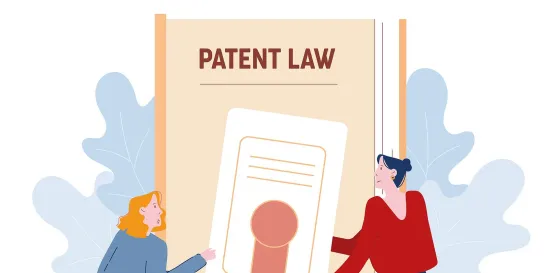The Court of Appeals for the Federal Circuit recently addressed the issue of “analogous prior art,” a patent law doctrine fundamental to the legal determination of whether a patent is invalid as obvious over the prior art. The decision illustrates the importance of carefully considering whether asserted prior art is analogous to the challenged patent, as the use of non-analogous art can result in dismissal of any obviousness argument based on that art.
Background on the Analogous Prior Art Doctrine
If a patent would have been obvious over the prior art from the perspective of a person of ordinary skill in the art at the time of the invention (or “POSA”), then the patent is invalid. A POSA is deemed to have all of the knowledge contained in the prior art. However, courts have concluded that only “analogous” prior art is relevant in the obviousness determination—that is, the prior art must bear some relationship to the patent at issue, or else a POSA would never have been aware of or considered the prior art. There are two tests to determine what art is analogous: (1) if the art is from the same field of endeavor as the patent at issue, regardless of the problem addressed, and (2) if the art is not within the same field of endeavor but is reasonably pertinent to the particular problem the patent at issue is concerned with. Although the test is seemingly simple, the implications are significant, as non-analogous art is generally accorded no weight in the obviousness analysis—and can therefore negate the defense entirely. Understanding the analogous prior art doctrine is thus critical for both patentees and patent challengers. A recent Federal Circuit decision, Sanofi-Aventis v. Mylan, provides useful insights for practitioners to consider.
Sanofi-Aventis v. Mylan
On May 9, 2023, the Federal Circuit in Sanofi-Aventis Deutschland GmbH v. Mylan Pharms. Inc., for what appears to be the first time, held that the Patent Trial and Appeals Board (PTAB) erred in finding a patent challenger’s cited prior art to be analogous to the challenged patent.
The case concerned a petition for inter partes review (IPR) of Sanofi’s ’614 patent, which covered a metered drug-dosing device. The IPR petition alleged that the ’614 patent claims were obvious based on a combination of three prior art references: “Venezia,” “Burren,” and the lead reference, “de Gennes.” The parties agreed that the ’614 patent and the de Gennes reference concerned separate fields of endeavor, as de Gennes related to automobile technology and not drug delivery. The issue therefore came down to whether de Gennes was “reasonably pertinent” to the problem to be solved by the ’614 patent.
The patentee argued that de Gennes, which addressed some mechanical problems that arguably resembled those sought to be solved by the ’614 patent, was not reasonably pertinent to the problem of the ’614 patent. Instead of arguing that de Gennes was pertinent to the problem of the ’614 patent, the petitioner argued that de Gennes was analogous art because it was pertinent to a problem addressed by the Burren reference. The PTAB concluded that Burren and Venezia together did not render the ’614 patent obvious, but found the patent to be obvious in view of all three references. Specifically, the PTAB found that de Gennes constituted analogous art to the ’614 patent, despite the fact that the petitioner only analogized de Gennes to Burren and not to the ’614 patent itself.
On appeal, the patentee argued that the PTAB erroneously expanded the petitioner’s argument that de Gennes constituted analogous art because the petitioner’s briefing compared de Gennes to another prior art reference rather than the ’614 patent. The patentee further argued that the PTAB improperly shifted the burden of persuasion from the petitioner to prove that the challenged claims were unpatentable to the patentee to defend the claims of the ’614 patent as patentable.
The Federal Circuit agreed with the patentee. The Court emphasized that patent challengers are not required to anticipate and raise analogous art arguments in the first instance but, as patents are presumed valid and patent challengers bear the burden of proving obviousness, they must respond to analogous art arguments when raised by the patentee. Further, the analogy must be shown between the reference and the challenged patent, and not between references. Here, the Court found that the petitioner did not address the patentee’s arguments that de Gennes is not pertinent to the problem to be solved by the ’614 patent, and instead incorrectly analogized de Gennes to another prior art reference. The Court found that, because the petitioner failed to show that de Gennes was analogous to the ’614 patent, the petitioner failed to show that the ’614 patent would have been obvious.
Takeaways
This case illustrates the importance of precisely addressing the question of analogous prior art and serves as a reminder to both patentees and patent challengers to seriously consider this issue as early as possible, as it can make or break a challenge to patent validity. Patent challengers should consider demonstrating at the outset of their obviousness argument that any asserted prior art is analogous, or at least be prepared to show analogy to the patent under either the “field of endeavor” or “reasonably pertinent” tests. The patentee should likewise consider ways to argue that any asserted prior art is not analogous, as this can negate the challenger’s obviousness argument. This may be done through, for example, using language in the claims and specification to narrowly define the problem to be solved by the patent (being cautious to avoid any characterizations that might negatively impact claim construction and infringement arguments), and by developing arguments as early as possible (perhaps with the help of experts in the field) as to why a POSA would not consider the asserted art to be relevant.



 />i
/>i
